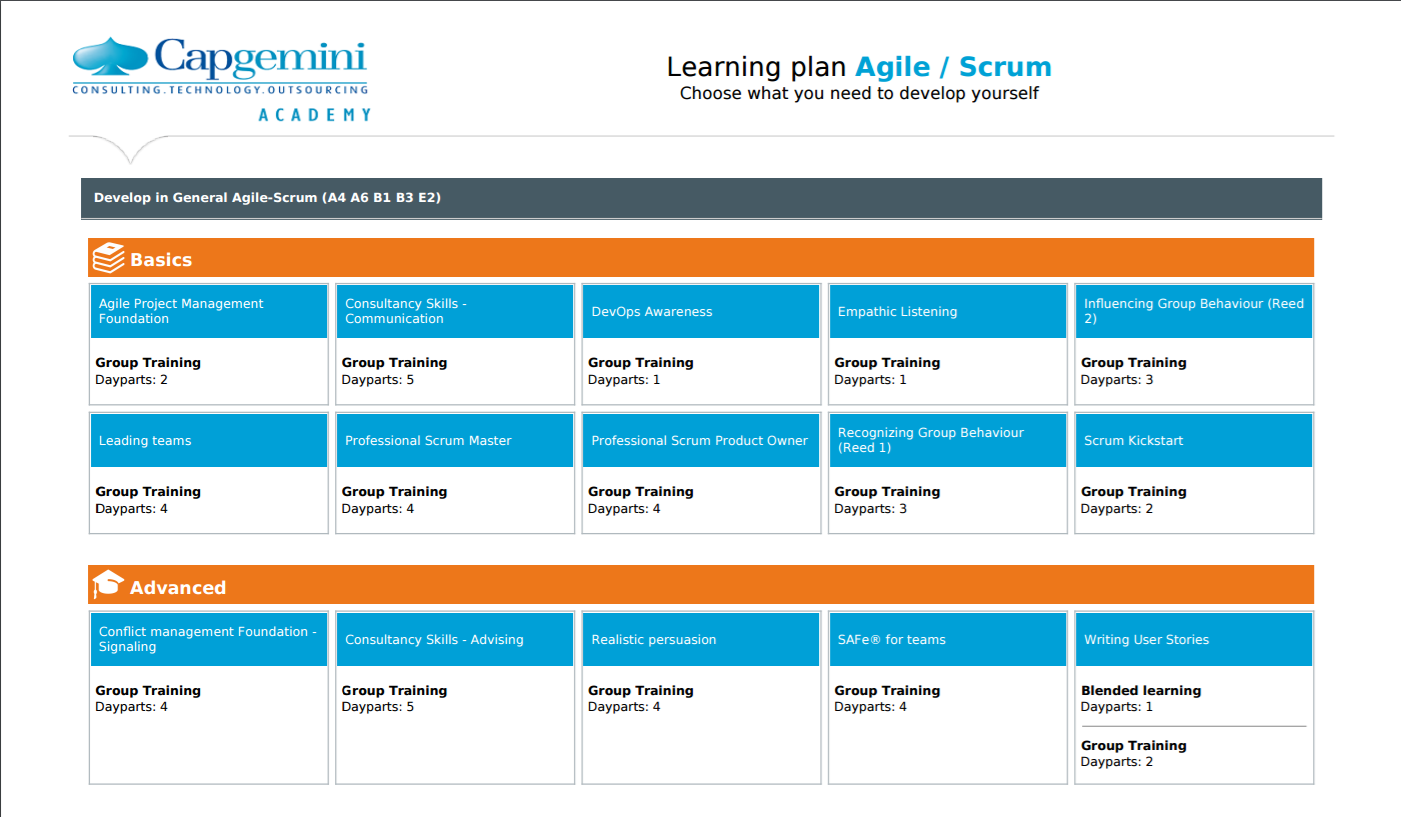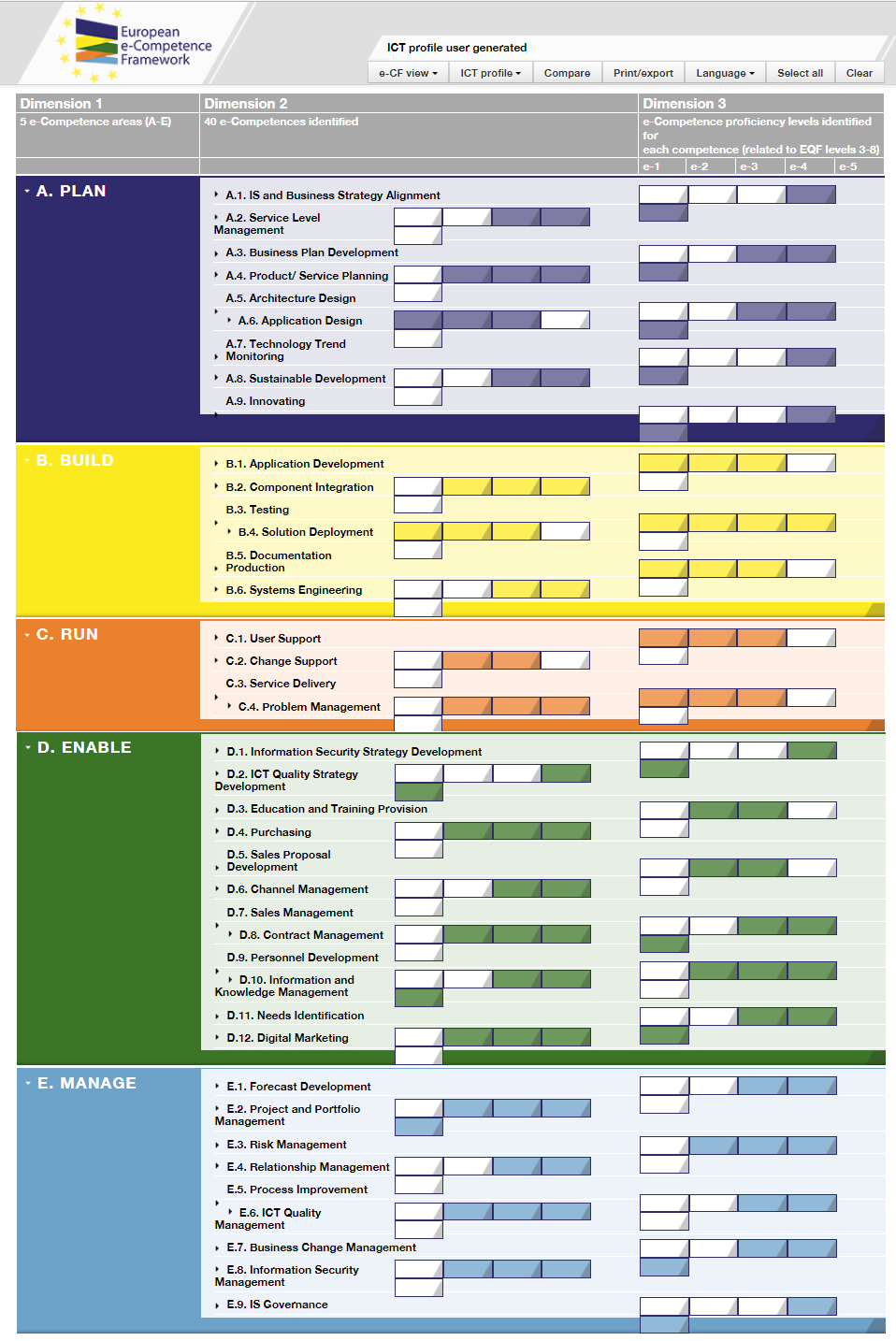-
How can you use the e-Competence Framework (e-CF) for your developement?

The e-CF e-Competence Framework is a description of technical IT skills, designed to achieve comparability between the qualities of IT professionals.
This enables you as a professional to see where where you stand. The e-CF is the first framework that covers the entire IT field and is internationally recognized.
At Capgemini, we believe in transparency and overview in the education landscape. Therefore, with our e-CF enabled curricula you can see which training or certification contributes te which e-CF competence and what courses you need to do to build your strength in a specific e-CF competence.
Which e-CF competences are there?
A complete overview of all e-CF competences you will find in this brochure. How to use these in combination with our learningplans, you can read below. You find the learningplan that fits your area of expertise, by selecting your field of expertise and choose "Learningplan" on the left.
Would you like to use the e-CF to improve the professional status of your organization? Then read all about how to do that on Sustainable employable with the e-Competence Framework and about our Comptence Radar.

How to use an e-CF learningplan?
All our courses are included in one or more core tasks, which is a task within the field of expertise in which you are working.
In a learningplan you see an overview of all core tasks that we recognize within your area of expertise. With these core tasks, you see a reference between brackets to the e-CF competence that fit with this core task. For example "Scrum Master (E2 D9)". this refers to the e-CF competences E2 and D9.
This way you can easily see, which training contributes to the developement of a specific e-CF competence.
An overview of e-CF competences?
Every job profile is divided into several competences. These competences are distributed over 5 main categories:
- Plan,
- Build,
- Run,
- Enable
- Manage.
How this is ditributed, you can see in the picture on the right.
The EQF is a common European reference framework which links countries’ qualifications systems together (diploma, degree and certifications), acting as a translation device to make qualifications more readable and understandable across different countries and systems in Europe.
Per competence you have the proficiency levels1 to 5 (e-1 - e-5). These levels correspond with the levels 3 - 8 of the European Qualifications Framework. What deze EQF levels mean is in below table.
.
EQF level e_CF level In the context of EQF, knowledge is described as theoretical
and/or factual.Level 1 • basic general knowledge Level 2 • basic factual knowledge of a field of work or study Level 3 • knowledge of facts, principles, processes and general concepts, in a field of work or study Level 4 e-1 • factual and theoretical knowledge in broad contexts within a field of work or study Level 5 e-2 • comprehensive, specialised, factual and theoretical knowledge within a field of work or study and an awareness of the boundaries of that knowledge Level 6 e-3 • advanced knowledge of a field of work or study, involving a critical understanding of theories and principles Level 7 e-4 • highly specialised knowledge, some of which is at the forefront of knowledge in a field of work or study, as the basis for original thinking and/or research
• critical awareness of knowledge issues in a field and at the interface between different fieldsLevel 8 e-5 • knowledge at the most advanced frontier of a field of work or study
and at the interface between fieldsWhat the e-CF really is, Co Siebes explains in this video.
-
- We can count on over 180.000 IT-Professionals worldwide
- All our trainers have relevant practical experience
- We train & coach over 12.000 IT-Professionals each year
- Our students value us with an average of 8.2 out of 10
- We understand what IT-Professionals need to stay fit for the future
-


